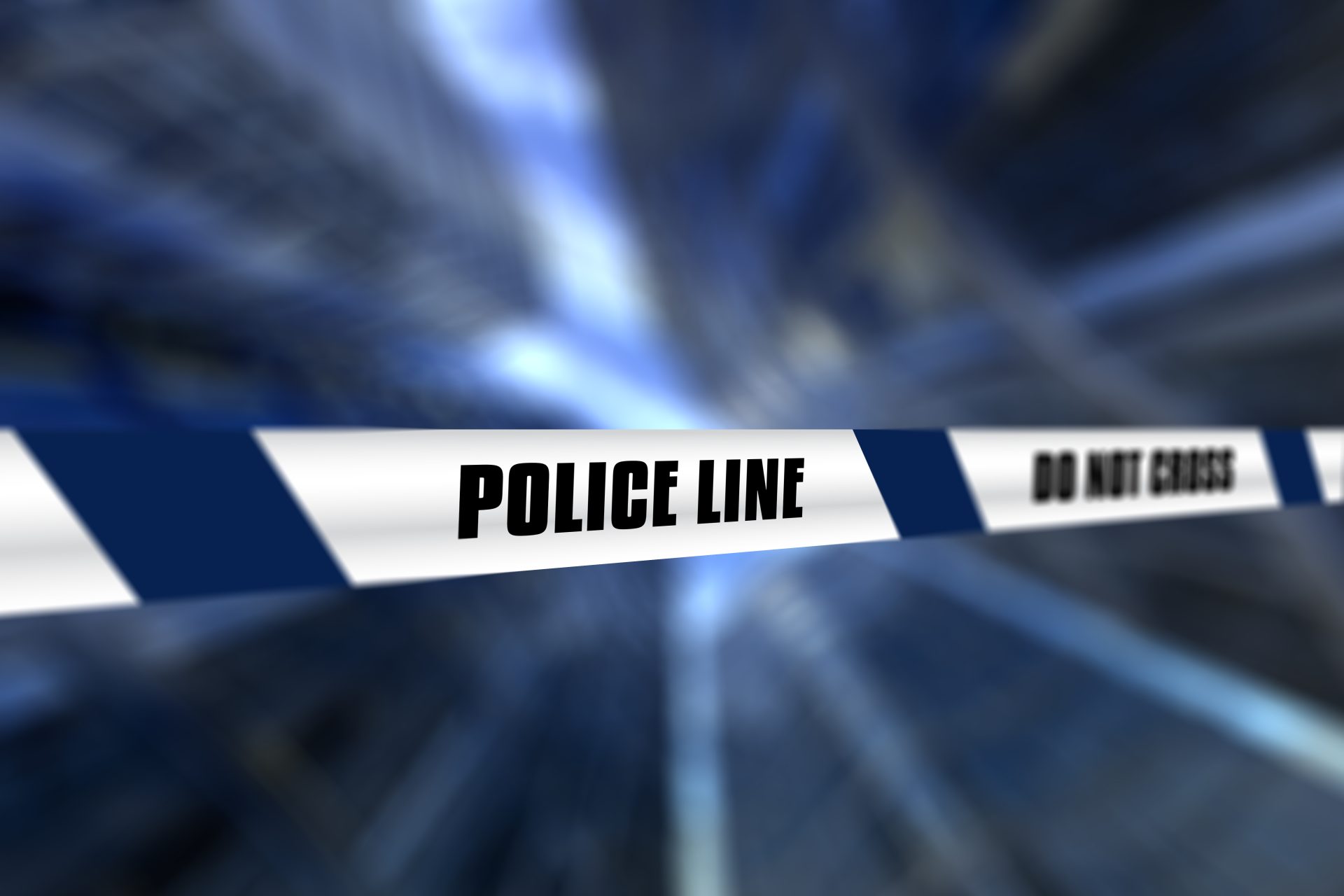Contents
В 2024 году темное облако школьных расстрелов продолжает бросать тень на учебные заведения по всем Соединенным Штатам, напоминая об их частоте и последствиях. Для любого родителя, беспокоящегося о безопасности своего ребенка в школе, эти цифры – больше, чем просто цифры, они означают ночи и постоянную бдительность.
Чтобы решить эту проблему, мы старательно собирали данные из таких источников, как Архив насилия с применением огнестрельного оружия и Everytown for Gun Safety. Наша цель – не просто предоставить вам данные, но и предложить четкую интерпретацию их значения. Понимая масштабы этой проблемы – от школ до кампусов колледжей, – вы сможете эффективно выступать за необходимые изменения и принимать взвешенные решения для своей семьи.
В 2023 году было зарегистрировано 82 случая стрельбы в школах, в результате которых погибли 46 человек. Эта тревожная картина подчеркивает необходимость инициатив по противодействию и предотвращению таких душераздирающих случаев.
Случаи стрельбы в школах в 2024 году

За шесть месяцев 2024 года в США произошло в общей сложности 35 случаев стрельбы в школах. Эти душераздирающие инциденты нарушили безопасность 9 кампусов колледжей и 26 школ K 12, оставив после себя страх и травмы. Информация об этих событиях получена из таких источников, как Gun Violence Archive, Education Week и Everytown for Gun Safety.Эти базы данных обеспечивают достоверность информации и служат напоминанием о серьезности каждого задокументированного инцидента. Во всех из них стреляли как минимум в одного человека, исключая преступника.
Данные о таких случаях свидетельствуют о закономерности: стрельба в школах представляет угрозу безопасности и благополучию учеников, учителей и сотрудников. Каждый эпизод усугубляет страх, который сохраняется в местах, предназначенных для обучения и развития. Эмоциональное воздействие этих событий оставляет неизгладимые шрамы в пострадавших сообществах. Родители и опекуны находятся в состоянии постоянной тревоги.
Важно понимать, что эта мрачная статистика представляет собой нечто большее, чем просто цифры; она символизирует людей, чьи жизни навсегда изменились в результате актов насилия.
Изучение каждого события помогает нам понять масштаб бедствия, которое испытывают те, кто пострадал лично, и подчеркивает настоятельную необходимость принятия мер, чтобы избежать подобных бедствий в будущем.
Как отмечает организация Everytown for Gun Safety, чаще всего инциденты с применением огнестрельного оружия происходят в школах с большим количеством цветных учеников. Эти тревожные тенденции проливают свет на неравенство в нашей системе образования. Подчеркните необходимость решения системных проблем, способствующих насилию в школах.
Очень важно вести диалог о протоколах школьной безопасности и ресурсах психического здоровья, а также выступать за изменения в политике, которые ставят во главу угла безопасность как учеников, так и сотрудников. Учитывая сложность этого вопроса, необходимо предпринимать активные шаги на всех уровнях, чтобы школы оставались пространством для образования и развития.
По мере углубления в эту область мы будем изучать связи между насилием с применением оружия, его психологическим воздействием и необходимыми реформами в образовательных учреждениях.
Жертвы и травмы, зарегистрированные в этом году
Статистические данные просто ужасают, показывая, как эти инциденты влияют на людей и сообщества. В 2024 году в результате школьных расстрелов погибло 17 человек. Каждый из этих 17 погибших – не число, а человек, с его стремлениями, чаяниями и близкими, которые теперь столкнулись с потерей.
Важно понимать, что эти потери выходят за рамки самих людей – они охватывают семьи, друзей и целые сообщества, которые чувствуют пустоту, оставшуюся после их отсутствия. Горе и боль, вызванные этими бедствиями, невозможно выразить в цифрах.
Смертельные случаи при стрельбе в школах (2024)
| Месяц | Количество смертей |
|---|---|
| Январь | 3 |
| Февраль | 2 |
| Март | 4 |
| Апрель | 5 |
| Май | 3 |
Изучение помесячной разбивки позволяет увидеть, что ни один месяц не избежал столь разрушительных потерь. Когда мы обрабатываем эту статистику, становится ясно, что речь идет не просто о цифрах – речь идет о жизнях, которые изменились, оборвались и изменились навсегда.
Подумайте вот о чем: Тихое январское утро внезапно разорвали выстрелы. Три жизни унесены. Семьи разрушены. В школах навсегда остались отголоски этого ужасного события.
Кроме того, важно признать, что во время стрельбы в школах пострадали по меньшей мере 39 человек. Эти ранения включают в себя как смертельные, так и несмертельные ранения, каждое из которых представляет собой жизнь, навсегда запечатленную этими травматическими событиями.
Подумайте об этом – 39 человек, чьи жизни сильно пострадали от насилия, вспыхнувшего в предполагаемой безопасности их образовательной среды.
Эти цифры иллюстрируют огромную человеческую цену школьных расстрелов. Они подчеркивают острую необходимость принятия эффективных мер по предотвращению и устранению последствий таких трагедий, обеспечивающих безопасность и благополучие учащихся, педагогов и местных сообществ по всей стране.
По мере того как мы переводим внимание на понимание основных тенденций и закономерностей, становится очевидным, что из собранных на сегодняшний день данных можно извлечь много полезного.
Тенденции и закономерности школьной стрельбы
Цифры весьма тревожны, они свидетельствуют о росте числа случаев стрельбы в школах, который достигнет своего пика в 2023 году. Это указывает на реальность, которая требует изучения и принятия упреждающих мер.
Признавая рост числа случаев стрельбы в школах, важно также точно определить географическое положение этих инцидентов. Такие штаты, как Техас, выделяются по количеству случаев стрельбы в школах по сравнению с численностью населения. Распространенность событий в разных штатах требует более тщательного изучения факторов, определяющих эту закономерность.
Если посмотреть, где расположены штаты, в которых происходят расстрелы, можно получить представление о потенциальных факторах, способствующих этому. В южных штатах, таких как Техас и Луизиана, количество школьных расстрелов увеличилось в несколько раз. Изучение этих тенденций может выявить связь между демографическими показателями, экономическими условиями и доступностью оружия.
Кроме того, если принять во внимание общее количество случаев стрельбы в школах по отношению к численности населения каждого штата, можно получить представление о серьезности проблемы. Анализируя данные по Вашингтону, становится ясно, что плотность населения существенно влияет на частоту школьных перестрелок. Столица США сообщила о количестве случаев стрельбы в школах на душу населения, что подчеркивает сложности, связанные с городской средой и ее влиянием на подобные инциденты.
Если посмотреть на другую сторону медали, вспомнив такие штаты, как Монтана, Вайоминг, Нью-Гэмпшир, Вермонт и Род-Айленд, в которых за это время не произошло ни одной школьной перестрелки, то возникает вопрос о том, какие факторы могут повлиять на их показатели. Понимание того, что отличает эти штаты, может помочь разработать стратегии по снижению риска школьных расстрелов в этих регионах.
Когда мы сталкиваемся с этой реальностью, очень важно подходить к этим тенденциям и закономерностям с упором на понимание. Изучая как штаты с большим количеством инцидентов, так и те, где их не было, мы можем обнаружить ценные сведения, которые могут стать основой для целенаправленных вмешательств и превентивных действий.
Этот аналитический метод не только расширяет наши знания. Он также подчеркивает многогранный характер решения проблемы школьных расстрелов. Он подчеркивает важность учета таких факторов, как демография, плотность населения, экономическое неравенство и правовая база, при разработке тщательных стратегий по предотвращению этих трагических событий.
Изучение динамики, связанной с тенденциями в области школьных расстрелов, позволяет получить представление о том, как принимать взвешенные решения и добиваться значительных изменений.
Принятые меры безопасности

В ответ на проблему стрельбы в школах учебные заведения по всему миру принимают меры по обеспечению безопасности своих учеников и персонала. Применяя меры безопасности, школы стремятся сохранить святость и безопасность своей учебной среды. Давайте посмотрим на протоколы безопасности, которые были приняты в школах для создания безопасной атмосферы, где ученики могут без опасений сосредоточиться на учебе.
Одной из важных мер безопасности является установка металлодетекторов на входе для проверки на наличие оружия. Эти детекторы служат сдерживающим фактором, не позволяющим проносить оружие на территорию школы. Кроме того, они дают чувство уверенности ученикам и учителям, демонстрируя, что принимаются все возможные меры для обеспечения их благополучия.
Увеличение присутствия сотрудников школьных ресурсов
Еще одним важным аспектом этих мер безопасности стало усиленное присутствие офицеров по охране порядка в школах (SRO). SRO – это обученные сотрудники правоохранительных органов, которые находятся в школах. Их проактивная роль заключается не только в поддержании правопорядка, но и в установлении прочных отношений с учениками, что способствует созданию атмосферы доверия и безопасности.
Рассмотрим пример средней школы Джефферсона, где офицер SRO Рамирес стал знакомой и надежной фигурой как для учеников, так и для персонала. Его присутствие не только сдерживает потенциальные угрозы, но и является надежным контактным лицом для решения любых вопросов, связанных с безопасностью и охраной.
Использование передовых технологий
Многие учебные заведения используют системы видеонаблюдения с искусственным интеллектом, чтобы быстро адаптироваться к изменениям. Эти системы анализируют видеозаписи с камер, размещенных по всей территории школы, для выявления угроз. Обнаруживая действия или поведение, эти системы наблюдения с искусственным интеллектом играют роль в раннем обнаружении угроз и немедленном реагировании во время чрезвычайных ситуаций, тем самым усиливая традиционные методы обеспечения безопасности.
Кроме того, стратегии безопасности включают в себя такие меры, как управление точками доступа и укрепление дверей классных комнат. Контролируемые точки доступа регулируют вход в школьные здания, чтобы гарантировать, что туда допускаются уполномоченные лица. С другой стороны, укрепленные двери классных комнат служат барьером в чрезвычайных ситуациях, обеспечивая безопасность как учеников, так и учителей.
Эти проактивные инициативы в области безопасности свидетельствуют о том, что учебные заведения уделяют первостепенное внимание безопасности и благополучию своих учеников и сотрудников. Применяя подход, сочетающий инновации с традиционными методами обеспечения безопасности, школы стремятся создать учебную среду, в которой безопасность остается первостепенной, не ставя под угрозу качество образования.
Законодательное воздействие на школьную стрельбу

Принятие и реализация новых законов, касающихся контроля над оружием и психического здоровья, находится на переднем крае борьбы со школьными расстрелами. В разных штатах эти изменения принимают различные формы – от более строгих проверок биографии и ограничений на покупку до большего внимания к психическому здоровью учащихся.
Например, в некоторых штатах введены обязательные периоды ожидания при покупке огнестрельного оружия, направленные на предотвращение импульсивных актов насилия. Другие меры включают ограничения на магазины повышенной емкости и запрет на штурмовое оружие, призванные ограничить потенциальную смертоносность любых попыток нападения.
Эффективность законодательных мер
Хотя эффективность этих законодательных мер может быть разной, существует взаимосвязь между ужесточением оружейного законодательства и снижением уровня насилия в школах. В штатах, где были приняты более строгие законы об оружии, наблюдается снижение числа инцидентов, связанных с ним, что говорит о том, что разумные правила действительно могут оказать положительное влияние.
Штат А (строгий контроль над оружием)
- Количество случаев стрельбы в школах: 2
- Население: 5 миллионов
Штат B (слабое регулирование оборота оружия)
- Количество расстрелов в школах: 8
- Население: 5 миллионов
Это сравнение наглядно иллюстрирует, как законодательные меры могут повлиять на возникновение случаев стрельбы в школах разных штатов.
Более того, программы поддержки психического здоровья, внедренные в школах, доказали свою эффективность в решении основных проблем на ранних стадиях, что потенциально может предотвратить инциденты с применением насилия до их возникновения. Предоставляя учащимся доступные ресурсы и рекомендации по охране психического здоровья, эти программы могут существенно изменить ситуацию в плане выявления и оказания помощи людям, находящимся в группе риска.
Призыв к общенациональной единой политике
Один из ключевых моментов, который подчеркивают эксперты и политики, – это важность внедрения мер в масштабах всей страны. Наличие протоколов безопасности на одном уровне может гарантировать, что все штаты будут придерживаться установленных стандартов, повышая тем самым эффективность предотвращения насилия в школах. Сторонники такого единообразного подхода утверждают, что он не только упрощает процедуры обеспечения безопасности, но и сводит к минимуму потенциальные уязвимости, которые могут возникнуть из-за непоследовательного регулирования в разных областях.
Изменения в законодательстве существенно влияют на то, как организована школьная безопасность. Они могут значительно повлиять на то, как часто и насколько серьезно происходят инциденты со стрельбой в школах. Усилия по внедрению этих мер свидетельствуют о стремлении минимизировать риски.
Не ограничиваясь мерами по предотвращению стрельбы в школах, важно также подумать об эмоциональном и общественном воздействии этих событий на учащихся, преподавателей, семьи и общество.
Психологические и социальные последствия

Психологические и социальные последствияКогда происходит такое трагическое событие, как стрельба в школе, оно затрагивает не только непосредственных участников. Все школьное сообщество, включая учеников, учителей и родителей, переживает последствия. Это может привести к чувству страха, тревоги и долгосрочным последствиям для самочувствия всех участников.
Последствия стрельбы в школе очень серьезны. В результате у многих людей могут развиться такие состояния, как постстрессовое расстройство (ПТСР), тревожные расстройства и депрессия. Эти проблемы с психическим здоровьем затрагивают не только жертв, но и все школьное сообщество.
Представьте себе, что вы постоянно беспокоитесь о своей безопасности, находясь в школе. В такой обстановке и ученикам, и педагогам сложно сосредоточиться на учебе и преподавании. Страх и неуверенность нарушают гармонию в школе, переключая внимание с учебных занятий на безопасность – бремя, которое не должно быть частью образовательного опыта каждого.
После стрельбы в школе в обществе сохраняется ощущение уязвимости. Повседневный распорядок нарушается, что оставляет чувство тревоги, которое сохраняется на протяжении долгого времени.
Чтобы справиться с этими последствиями, школы предпринимают шаги по инвестированию в ресурсы психического здоровья и подходы, учитывающие травмы. Предлагая услуги по поддержке пострадавших, школы стремятся укрепить общество. Эти инициативы направлены на создание заботливой среды, в которой эмоциональное исцеление и академический прогресс могут происходить вместе.
Идея практики, основанной на травме, выходит за рамки реагирования на инциденты – она предполагает интеграцию понимания травмы во все аспекты деятельности организации. Благодаря внедрению этих методов школы могут лучше удовлетворять потребности людей, пострадавших от трагедии, и предотвращать длительные негативные последствия для учебных заведений.
Психологический ущерб, вызванный этими событиями, сказывается на людях еще долго после их окончания. Поэтому очень важно продолжать поиск решений, направленных на укрепление благополучия и устойчивости школьного сообщества после трагических событий.
Важно признать, что последствия школьных расстрелов не ограничиваются нанесением вреда; они глубоко затрагивают эмоциональное здоровье целых сообществ. Решение этих проблем требует самоотверженности и принятия упреждающих мер для обеспечения восстановления и устойчивости тех, кто пострадал от травматических инцидентов.
В связи с тем, что в 2024 году число случаев стрельбы в школах возрастет, важность обеспечения безопасности учащихся как никогда высока. Онлайн-школа Legacy предлагает воспитывающую среду обучения, которая устраняет угрозы, присутствующие в традиционных школах.
Делая акцент на образовании и всесторонней помощи, онлайн-школа Legacy дает студентам возможность безопасно и эффективно учиться, не выходя из дома. Эта альтернатива не только решает вопросы безопасности, но и позволяет создать индивидуальный маршрут, отвечающий требованиям и предпочтениям каждого ученика.
В онлайн-школе Legacy мы стремимся к успеху вашего ребенка. Познакомьтесь с возможностями нашей школы, посетив наш сайт сегодня.





